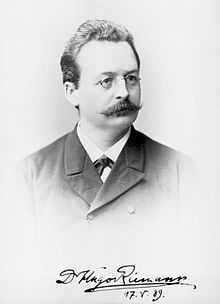Dominant parallel

In music theory, the dominant parallel is terminology used in German theory (Functional harmony) derived mainly from Hugo Riemann. The dominant parallel is abbreviated Dp, in major, and dP, in minor, where a capital letter (e.g. "D") denotes a major chord (the dominant) and a lowercase letter (e.g. "p") denotes a minor chord (its parallel). It is the (US) relative to the dominant and is thus considered to have or fulfill the function of the dominant.
Dp stands for Dominant-parallel. The word 'parallel' in German has the meaning of 'relative' in English. G major and E minor are called parallel keys. The G major chord and the E minor chord in the key of C major are called parallel chords in the Riemann system.—[1]
The parallel chord (but not the counter parallel chord) of a major chord will always be the minor chord whose root is a minor third down from the major chord's root, inversely the parallel chord of a minor chord will be the major chord whose root is a minor third up from the root of the minor chord. Thus, in a major key, where the dominant is a major chord, the dominant parallel will be the minor chord a minor third below the dominant. In a minor key, where the dominant may be a minor chord, the dominant parallel will be the major chord a minor third above the (minor) dominant.

- Dp is E minor, US mediant
- dP is B♭ major, US subtonic
See also
Sources
- ↑ Gail Boyd de Stwolinski Center for Music Theory Pedagogy (1993). Journal of Music Theory Pedagogy, Volumes 5-7, p.37, n.9. School of Music, The University of Oklahoma.
- ↑ 2.0 2.1 Percy Goetschius, Immanuel Faisst (1889). The Material Used in Musical Composition, p.139. G. Schirmer.
- ↑ 3.0 3.1 Haunschild, Frank (2000). The New Harmony Book, p.47. ISBN 978-3-927190-68-9.
- ↑ Kober, Thorsten (2003). Guitar Works: A Comprehensive Guide to Playing the Guitar, p.136. ISBN 978-0-634-03123-6.
- ↑ Sebastian Kalamajski (2000). All Aspects of Rock & Jazz, p.35. ISBN 978-87-88619-68-3.
| ||||||||||







